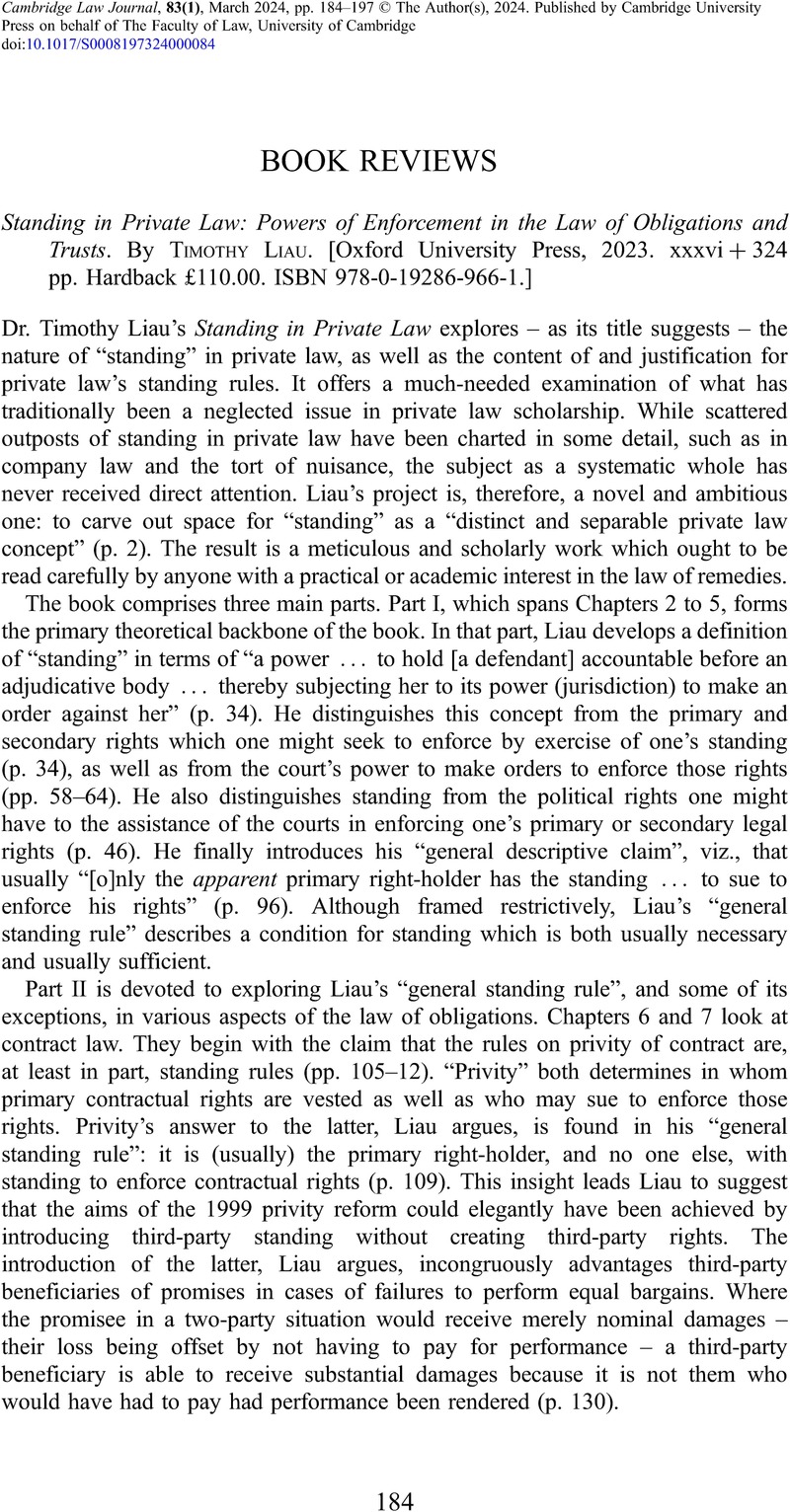No CrossRef data available.
Article contents
Standing in Private Law: Powers of Enforcement in the Law of Obligations and Trusts. By Timothy Liau. [Oxford University Press, 2023. xxxvi + 324 pp. Hardback £110.00. ISBN 978-0-19286-966-1.]
Review products
Standing in Private Law: Powers of Enforcement in the Law of Obligations and Trusts. By Timothy Liau. [Oxford University Press, 2023. xxxvi + 324 pp. Hardback £110.00. ISBN 978-0-19286-966-1.]
Published online by Cambridge University Press: 03 April 2024
Abstract
An abstract is not available for this content so a preview has been provided. Please use the Get access link above for information on how to access this content.

- Type
- Book Review
- Information
- Copyright
- © The Author(s), 2024. Published by Cambridge University Press on behalf of The Faculty of Law, University of Cambridge


